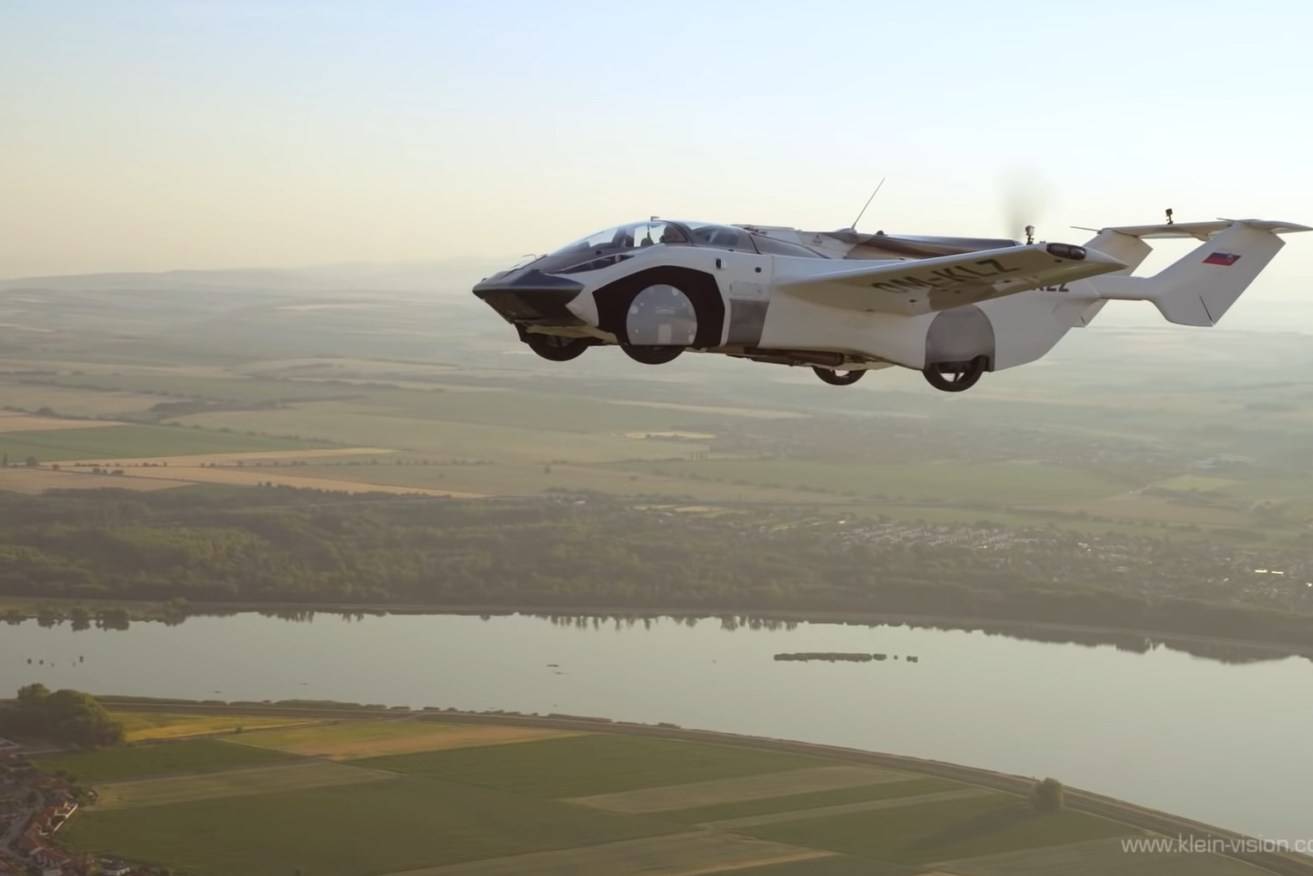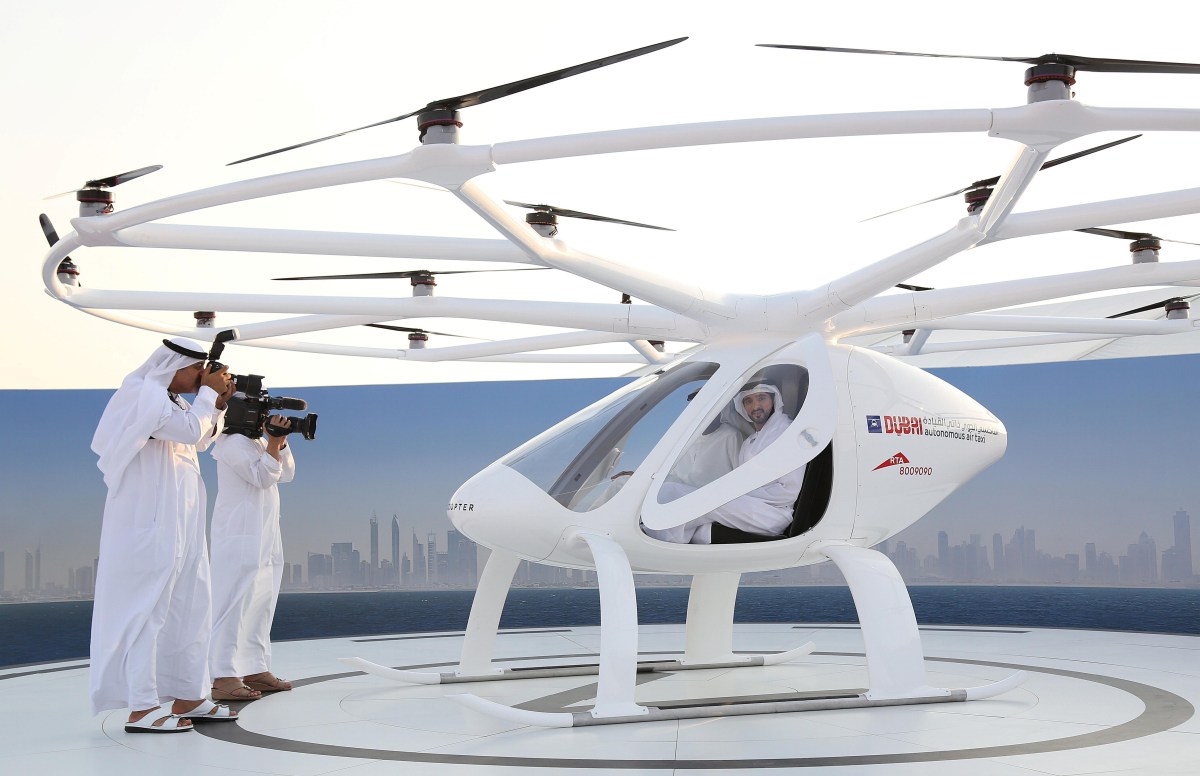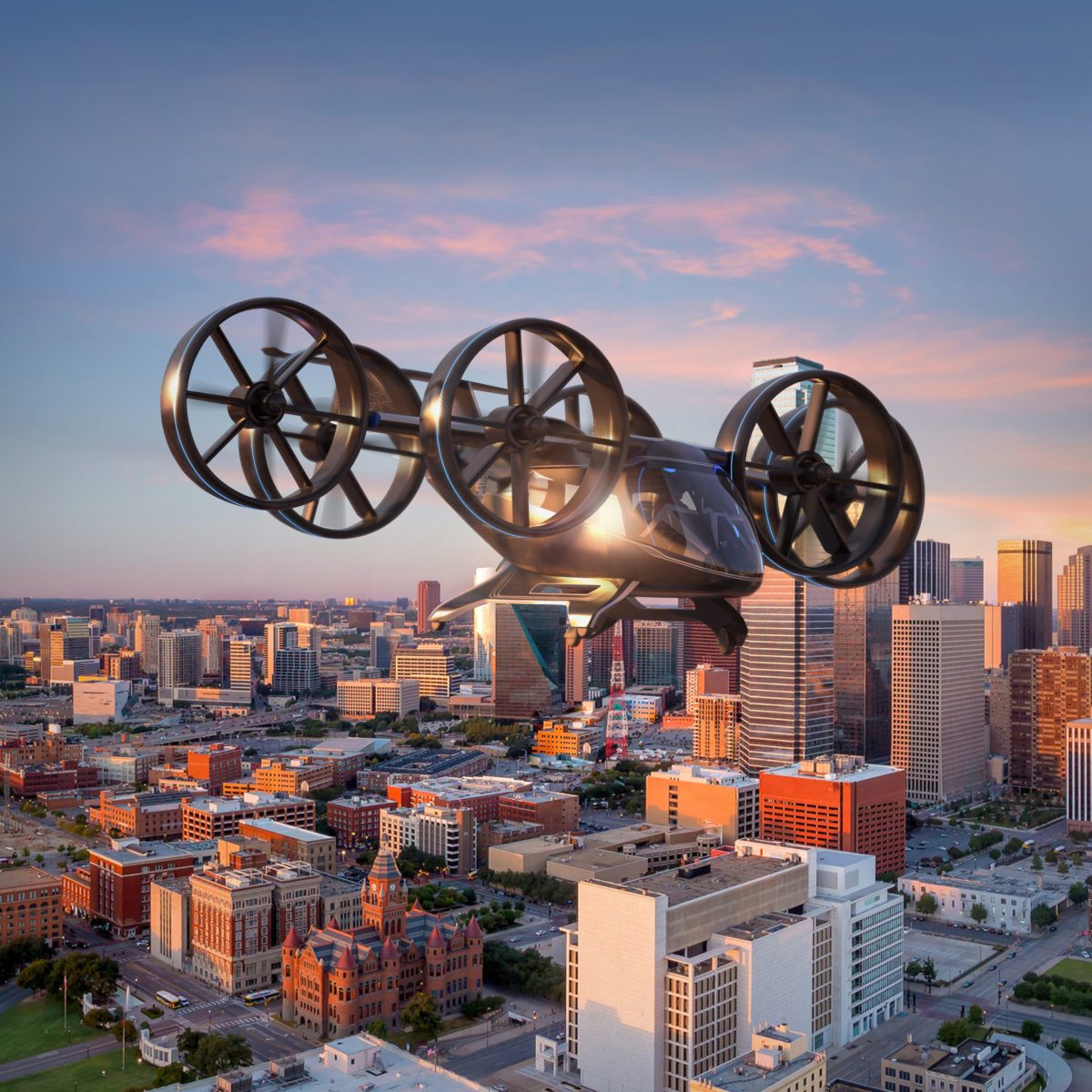Flying car future must be grounded in law
A push for personal aerial transport raises safety, privacy and environmental issues which need resolving before takeoff, argues Morry Bailes.

Klein Vision's Air Car has successfully flown between cities in Slovakia. Photo: Klein Vision/PA Wire.
Since 1917, inventors have been trying to produce the flying car.
Often a feature of science fiction movies – think Blade Runner – there has been a certain obsession with getting a car airborne since almost the beginning of the automobile itself. Attempts have been met with varying degrees of success, some more plane than car in appearance. But commercial challenges or a lack of genuine belief in its viability have choked off all attempts until perhaps now.
Slovakian company Klein Vision has developed a successful prototype vehicle, the ‘Air Car’, that might be the real deal. It looks half car and half plane, is powered by a 1.6 litre BMW engine, and – most importantly – actually works. What will stop us then taking our beloved cars to the wing and opening up a world of possibility? Plenty actually, but if it happens law and regulation will be central to potentially getting it up, up and away.
When new technologies hit the marketplace, the law is quite often flat-footed. Disruptive technologies have a habit of leaving the law in their wake; in catch-up mode if you will. Keeping up with big tech has proved virtually impossible even with a menagerie of regulation. In a comparable area to the flying car, legislators took their sweet time dealing with a far more basic aerial technology, regulating drones. We haven’t necessarily even got that right yet. Only latterly did we ban drones from around airports after realising the threat, and although they are useful in commercial applications, loss of privacy associated with drone flight remains a big bugbear.

Dubai’s Crown Prince with a flying taxi in 2017. Photo: Reuters/Satish Kumar
How will we regulate the use of technologies like the ‘Air Car’?
The Civil Aviation Safety Authority (CASA) is almost certainly going to be front and centre in terms of informing and policing regulation for flying cars in the future, that is if commercially this type of transport ever gets off the ground, so to speak.
In 2017, a dry run of the required regulatory architecture commenced when Uber announced it intended to have flying cars in Sydney by 2023. Uber has now abandoned those plans, but not before regulators and the NSW government had started to think about the required response. A CASA spokesperson was quoted at the time as saying:
“We are supportive of emerging aviation technology, with Australia having been a world leader in the safety regulation of drones. Naturally, any new technology must meet relevant and acceptable safety standards covering the design and construction of the aircraft, pilot training, operations and access to airspace.”
To an extent these are motherhood statements, but it goes to show that CASA believes it is workable. Naturally none of this can occur without a legal framework, and it is not all that difficult to speculate on what parliaments and lawmakers could be called upon to consider.
First will be approval of the flying car itself. What will be allowed to fly will obviously require rigorous inspection and evaluation. Safety regulation in Australia and other developed countries is strict so it is possible that the Air Car may become more immediately airborne in developing countries where regulation may be more relaxed.
However, the Air Car has already undergone 200 takeoffs and landings to satisfy the European Aviation Safety Agency, CASA’s European equivalent. It has also flown between Slovakian cities, but is strictly confined to taking off and landing at airport runways at this stage owing to its own design. So if there is popular acceptance of the technology, creating regulation in this area is plainly doable. Such regulation would deal with not only what can fly, but likely extend to maintenance and service obligations, and required repairs and upgrades, just as with aircraft.
It may also demand a degree of uniformity and conformity, given that as we are at the beginning of this type of transport many designs and approaches are out there.

The Bell Nexus vertical takeoff and landing flying taxi was unveiled in 2019. Uber has expressed interest in the design. Image: Bell/Cover Images
In the case of electricity, AC was used as was DC, before Edison, borrowing from Tesla, figured out that by putting it together AC/DC in first instance stopped killing people and in the other was far more reliable. General Electric was born on the back of it. Or the market may decide, as with Beta and VHS. However don’t be surprised if for a variety of reasons set out below, legislators and regulators take a hand in prescribing outcomes of what types of flying cars will receive the regulatory nod and which ones won’t. Environmental reasons alone may pre-determine that.
Next on the list is who can fly. Air Car has already intimated operators will need to be trained and qualified pilots. Given our existing regulations, one imagines the flying car pilot will need to fit into a new criteria which will look similar to what we already have. No need then to reinvent the wheel on that front. However that also immediately limits the application of airborne cars to a very few people in Australia, unless the law ultimately lowers the bar and permits licensed operators to train in alternate ways, particularly once the technology is advanced and simplified.
Whilst that type of regulatory licensing may not be particularly legally challenging, by limiting who can fly these machines it is the case that law and regulation may initially diminish their commercial viability. Technology though may ultimately trump the problem. Just as driverless cars exist now, so too may driverless flying cars in the future. Planes can operate using AI, so can cars, and the driverless flying car was at the heart of Uber’s plans.
Third, to navigate a sky already filled with aircraft and drone activity, flight routes will need to be planned and approved and be subject to law and regulation. Our imagined highways in the sky may remain a matter of imagination for the time being. The real challenge in the future will be if the technology becomes commercially saleable and interest grows. For the present, one would expect the flying car to line up with other aircraft much like light planes, or use landing pads like helicopters. If our skies become busier, flight altitudes and routes will need to be further established and regulated.
Fourth, as with conventional cars and aircraft there will likely be law and regulation around such things as noise. Flying cars are known to be noisy beasts, many with multiple rotors if they are designed for vertical lift. That will create noise pollution. In the same way that on occasion drones are a pest, flying cars may easily annoy the general public and that will demand a regulatory response, or the industry will fail at the first hurdle.
Further, one can imagine planning disputes relating to flight paths and takeoff and landing sites. If the industry gets momentum infrastructure will be required to support it, and to state the obvious, most will not want these vehicles taking off and landing in their own backyard. Air Car takes off like a plane, but a rotor-lifted vehicle will emerge that enables takeoff and landing on smaller surfaces, like a helicopter. Considerable thought will be required on the urban planning side of the equation which necessarily involves making law and enforcing regulation, particularly in an area so ripe for contention. Similarly, land conservation can certainly attract public interest, and thereby law.
Law and regulation will also need to extend to dealing with the potential threat posed by flying cars, in much the same way as we have with aircraft and belatedly with drones. In the wrong hands such a machine is a weapon. As technology advances, all machines can be hacked, thus even if the operator is not responsible, would be terrorists and cyber criminals will see the flying car as a target. This is hardly a problem restricted to this form of transport, but a broader problem across society that is bound to attract legislators interest, or ought to. Security as well as safety will top the bill in lawmakers minds, including no-fly zones around sensitive areas as with drones.
When new technologies such as the flying car emerge, legislators will also be under pressure to answer the energy question. Air Car uses a conventional engine. In an era of profound environmental concerns amongst the general population, flying cars will need to answer the energy propulsion question for consumers to be convinced they are a good, not bad, thing. To get today’s fossil-fuelled cars off the road may lead to environmental pluses. However flying cars may be regulated from the outset so as not to add to the problem of air pollution currently experienced in all larger cities. Batteries don’t currently provide the answer as they are too heavy, so there is work to be done. Air pollution as well as noise pollution will be under scrutiny by parliaments and regulators.
We know we are at the beginning of something challenging in regulatory terms when even the language surrounding flying cars is not yet settled. To some they are UAVs, unmanned aerial vehicles, to others VTOLs, vertical takeoff and landers. There is a possibility that the flying car will remain a pipe dream because commercially the public will not support the idea. Yet intriguingly the current technology seems to be brimming to a point where there is too much talk without there being some action.
If the flying car becomes a commercial reality, law and regulation will have a central and integral part to play. Indeed it may be the final arbiter on the future and viability of this burgeoning industry. Without regulatory support it is difficult to see how it can get off the ground. With the public and regulation behind it, it may.
It is a moments like these that we are reminded of how central law is to every circumstance, particularly when an area is novel and new. It may be weighty to quote former US Supreme Court judge Joseph P. Bradley when he said: ‘Society cannot exist without law. Law is the bond of society: that which makes it, that which preserves it and keeps it together’, but he was entirely right.
As to the flying car, we may have the technology, what we need next is the law.
Morry Bailes is Senior Lawyer and Business Advisor to Tindall Gask Bentley Lawyers, past president of the Law Council of Australia and a past president of the Law Society of South Australia.




